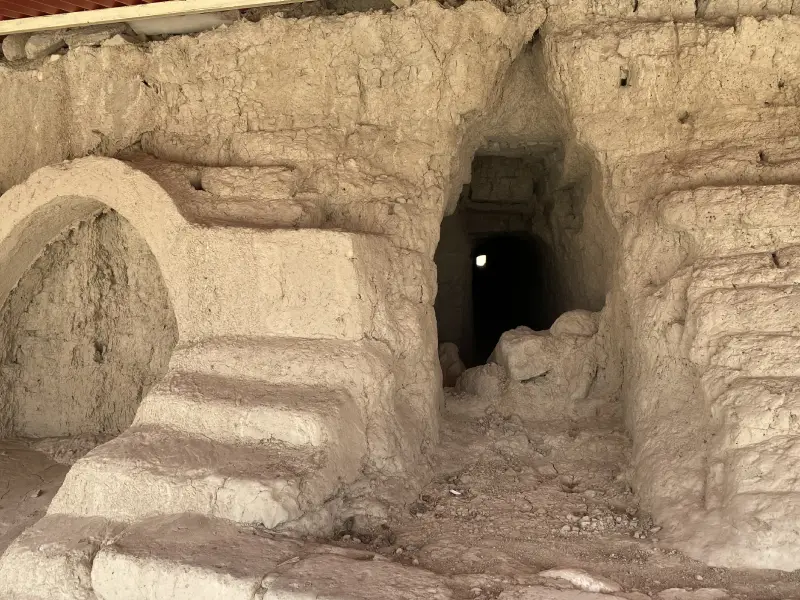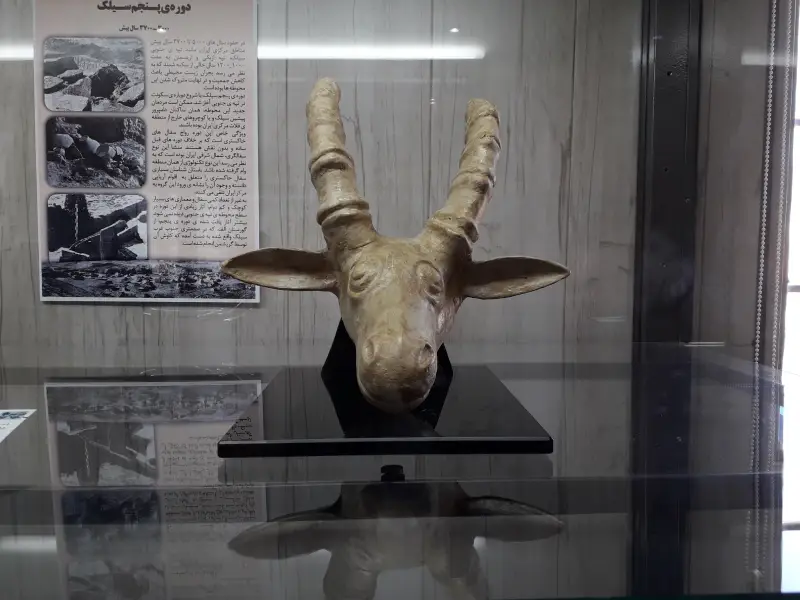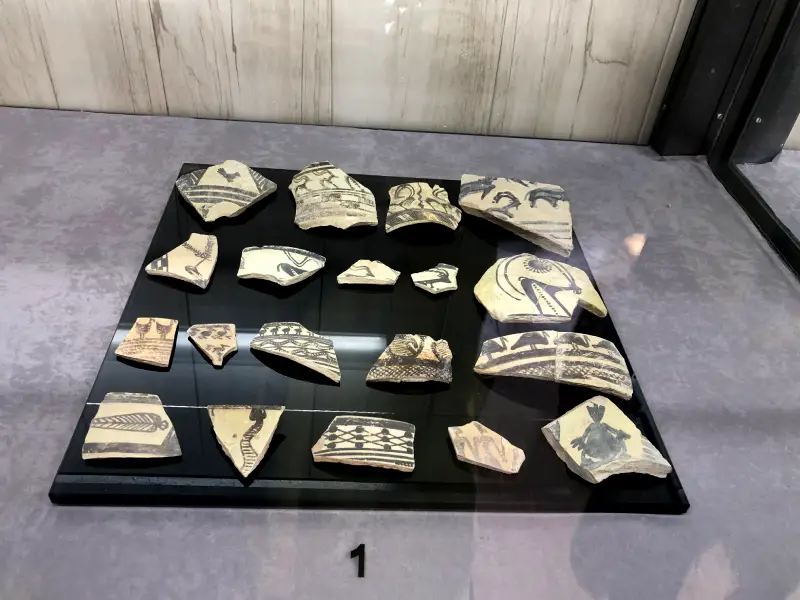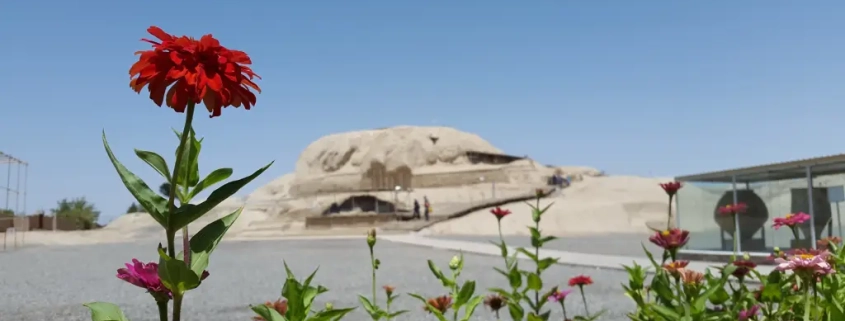Tepe Sialk, Kashan, Iran: Photos, History, Pottery
Tepe Sialk is an ancient area in the southwest of Kashan, which is 8000 years old and is considered one of the oldest known civilizations in the world. Tepe Sialk was placed in the list of national works of Iran with the number 38 in 1931.
Sialk Archeological Hills is one of the sights of Kashan, which contains the works of different eras of human civilization, including the Neolithic Age, the Copper and Stone Age, the Age of Urbanization, the Iron Age, and the Median Period.
The most important civilizational works known in Sialk include the first man-made villages and houses, the first domesticated animals and plants, the first pottery and metal melting furnaces, and the first works of calligraphy and writing. Join us as we explore this magnificent historical hill together.
Tepe Sialk History
During the years 1933 to 1937, the ancient site of Tepe Sialk Iran was explored for the first time by the French archaeological team headed by Roman Ghirshman.
He estimated the history of this civilization to be about 10 thousand years. After the termination of Girshman’s activities and the publication of his reports, no attention was paid to Sialk until 2001, when the Iranian archeological group went to Tepe Sialk.
The Iranian archeology team headed by Dr. Sadegh Malek Shahmirzadi explored this historical area during the years 2001 to 2006.

His exploration team, which was selected from all experts in different fields, even from other countries, achieved new results during five seasons of exploration, among which we can mention the discovery of Sialk Ziggurat, a place of worship that Roman Girshman (the discoverer of ChoghaZanbil Ziggurat) had failed to discover.
After the completion of Dr. Malek Shahmirzadi’s excavations, some parts of this ancient site changed, and Dr. Hasan Fazeli also undertook archaeological excavations in Sialk Hill in 2007-2008. The results of this research have been published in several books and are available to everyone.
Who Built the Ziggurat of Tepe Sialk?
The exact identity of the builders of Tepe Sialk remains uncertain due to the site’s antiquity and the complex layers of history it represents.
Tepe Sialk has been occupied by different civilizations and cultures throughout its history, spanning thousands of years. The site’s construction and development are attributed to these successive societies, which include prehistoric, proto-Elamite, and later Elamite inhabitants.
The proto-Elamite civilization is mainly associated with the development of Tepe Sialk. The Elamites were an ancient people who inhabited the region of present-day southwestern Iran.
They are thought to have played a significant role in the construction and evolution of the site’s architecture and structures. Tepe Sialk’s history is complex and layered, and multiple generations and groups likely contributed to its construction and development over time.
The site’s archaeological remains provide insights into the evolution of architecture, burial practices, and cultural dynamics, showcasing the interactions of various societies that inhabited the area over millennia.
Tepe Sialk Age
The site’s most ancient layers date back over 7,000 years, showcasing the existence of early settlements and human activities.
These remnants provide a tangible link to a time when societies were just beginning to organize themselves into more structured communities, relying on innovative techniques to build their homes and shape their way of life.

As we move through Tepe Sialk’s stratigraphy, we encounter traces of later ages as well. The Proto-Elamite period, which flourished around 3200-2700 BCE, marks a significant phase in the site’s history.
During this era, the inhabitants displayed advanced architectural skills, constructing intricate structures and employing perfect pottery techniques. The subsequent Elamite civilization left its mark on Tepe Sialk, with the site becoming a center for trade, culture, and religious practices.
Tepe Sialk Ziggurat
Ziggurats are distinct architectural structures that were typically constructed by ancient Mesopotamian civilizations, such as the Sumerians and Babylonians.
These ziggurats were massive stepped pyramids with multiple levels, often topped by a temple dedicated to a goddess. The ziggurat’s design symbolized a connection between the earth and the heavens, and it served as a religious and administrative center for the city-state.
Historical periods of Tepe Sialk
Based on excavations and studies, archaeologists have divided the works in Tepe Sialk into six cultural periods, which are named from old to new, respectively, from Sialk 1 to Sialk 6.
Some of these works have been displayed in the showcases according to chronological order. In the following, we will describe these periods and the works left from them.
The First Period
The first period spans from 8,000 to 7,300 years ago, which is related to the oldest or first inhabitants of the northern hill. The Sialk people lived in small groups on the northern hill in houses made of non-durable materials such as reeds and wood.

During this period, people were hunters and gatherers and provided their main food by hunting wild animals such as rams, boars, gazelles, and deer and spent their time gathering fruits and snacks and seeds of wild plants such as pistachios, almonds, etc.
In the showcases of this section, you will see works such as stone tools for hunting and cutting, the first handmade pottery of this period, necklace beads, a millstone for grinding wheat and barley seeds, a clay scythe for harvesting and carbonized plant seeds.
The Second Period
The second period includes 7200 to 6700 years ago. The small community living on the northern hill, who lived in temporary houses, prospered during this period and built a small village.
These simple houses were built with layers and handmade clay. The people of this period had learned agriculture and animal husbandry well and used domestic animals and plants.
Also, the Tepe Sialk pottery history of this period was more elegant than the previous period and was decorated with black geometric and plant motifs. The works of this period include clay cooking pots, handmade clay, spinning Sialk, and clay figurines.
The Third Period
The third period is called the interval between 6300 and 5400 years ago when the Sialk people moved from the northern hill to the southern hill.
Here, they built houses with a more standard architecture consisting of a room, a stove, and a niche. During this period, people managed to extract copper metal.
The invention of the pottery wheel also belongs to the third period. From the objects of this period, we can mention the clay pieces with animal, human, and plant patterns and the remains of the copper metal smelting process and its products.
The Fourth Period
The fourth period starts from 5300 years ago and continues until 4900 years ago. During this period, the population increased, and trade expanded consequently.
During this period, Khan, or the local ruler in Sialk, held power and controlled society politically and administratively. The showcase objects of this period include bowls with curved edges, clay plates, and cylindrical seals.
The Fifth Period
Sialk Hill was probably used by new people for settlement from 3,600 to 3,000 years ago. One of the important characteristics of this period was the emergence and spread of gray pottery, which according to some archaeologists, these pottery shows the arrival of Aryan tribes in the region.

There are not many works and pieces of evidence of this period left in the area, and only the foundations of some houses have been found.
The Sixth Period
This period covers 3000 to 2700 years ago and is the last period of settlement in Sialk Hill, after which the Sialk area is abandoned forever, and its people are scattered in other areas of Kashan plain and continue their lives.
In this period, the tradition of making patterned pottery was revived, and tubular vessels with a special shape and Aryan motifs, such as warriors, winged horses, and more, became popular.
Among the works and remains of this period, we can mention the large adobe structure and the B-Sialk cemetery, 150 meters northwest of South Hill, which includes 217 graves, only 70 of which are safe and intact.
Tepe Sialk Pottery Price
The pottery found in Tepe Sialk has great historical and cultural value that goes beyond mere monetary considerations.
These pottery pieces provide a deep connection with the past and provide a glimpse into the life, customs, and artistic expression of ancient civilizations.
As such, it is challenging to assign a definitive price tag to these works, as their value goes beyond financial criteria.

Due to their importance, Tepe Sialk pottery sherds are often regarded as historical treasures preserved by reputable institutions, collectors, and experts who understand the importance of protecting our common human heritage.
While their value to researchers and enthusiasts cannot be overstated, it is important to approach the evaluation and acquisition of such artifacts with sensitivity and respect for the historical context, cultural significance, and ethical considerations associated with the antiquities trade.
Final Word
In the end, Tepe Sialk is an ancient puzzle waiting for curious minds to solve. Digging into its layers reveals stories from long ago when people lived in different ways than we do now. This place holds clues about their homes, what they made, and even how they said goodbye to their loved ones.
It is like a window into a time we can only imagine, and with each discovery, we get closer to understanding the secrets hidden beneath the soil. So, If you are planning to travel to Iran, be sure to visit the historical city of Kashan and put Tepe Sialk at the top of your to-do list.
Are you planning to travel to Iran and looking for an Iran resort? Consider Matinabad eco resort. Maybe the things to do in Kashan are also interesting for you.





Leave a Reply
Want to join the discussion?Feel free to contribute!